|
egy.com suggests following articles
|
|
Several of my articles on Garden City were plagiarized word for word by novelist MEKKAWI SAID (winner of the Egyptian State price for literature!!!!) and re-published under his own name in a three-part series in El-Masry El-Youm daily in September 2015. Cheers to our "talented" literature prize awardee. Your pain his gain !!!
|
EGY.COM - MAADI
MAADI’S BISHOP AVENUE
from the book Maadi 1904-1962; History & Society in a Cairo Suburb by Samir W Raafat
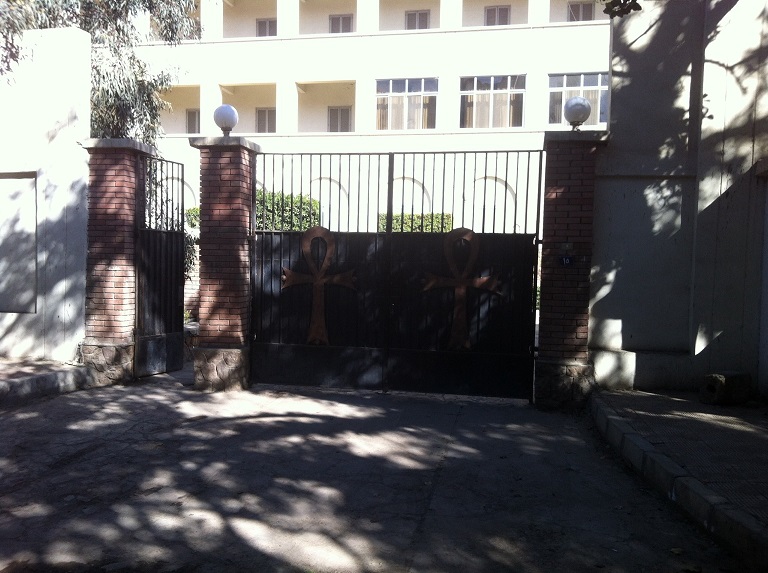
Seminary of Saint Leo

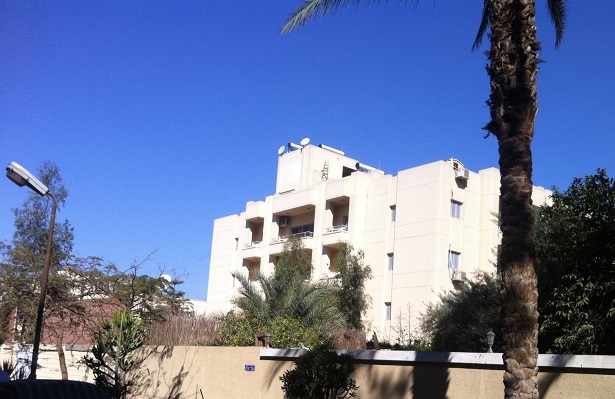
* * *

one of the last remaining inmates of Notre Dames des Apotres
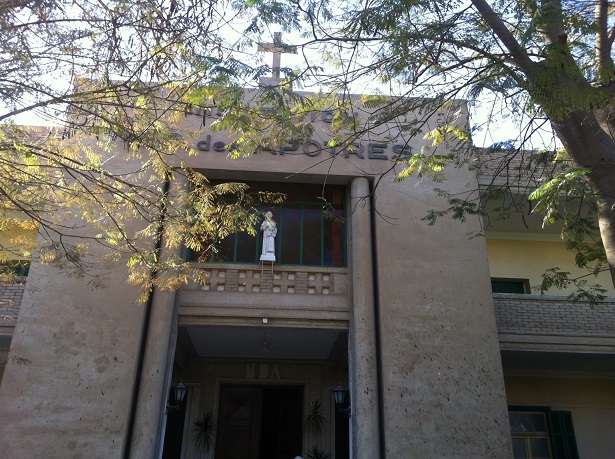

* * *
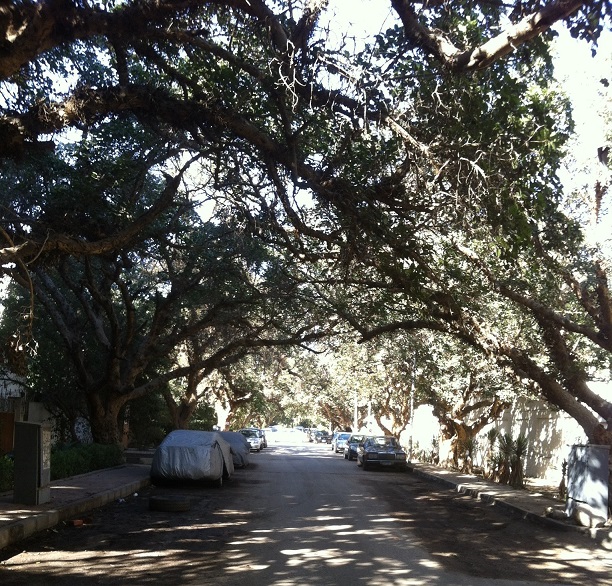
Road 15
* * *
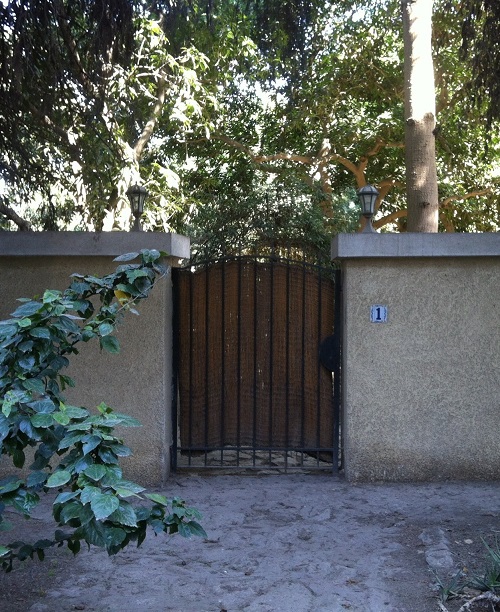
Villa Wilibald Luthy

Mohammed Saiidi stands guard in front of Villa Luthy's 120 year old carriage house

Villa Wilibald Luthy

Villa Wilibald Luthy
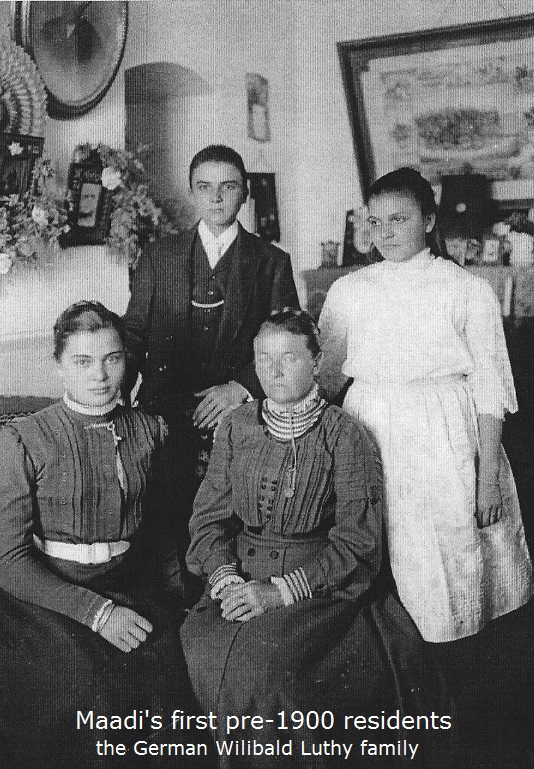
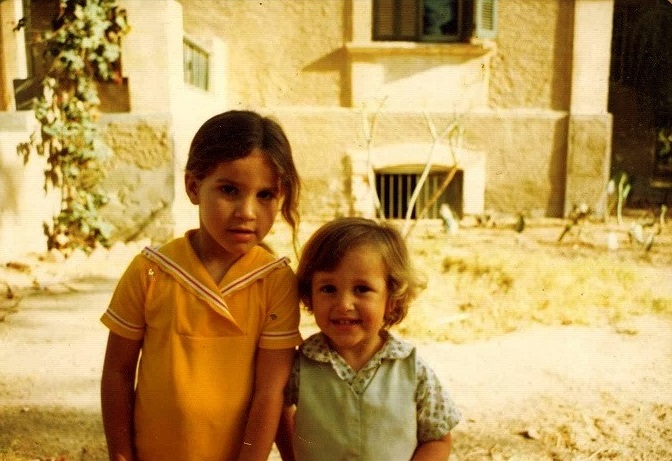
latter day Americo-Venezeulan tenants: Haajar & Mustafa Gouverneur
* * *
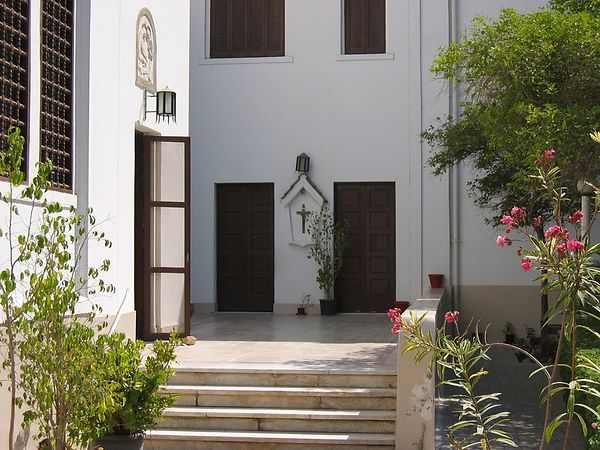
Holy Family Catholic Church of Maadi
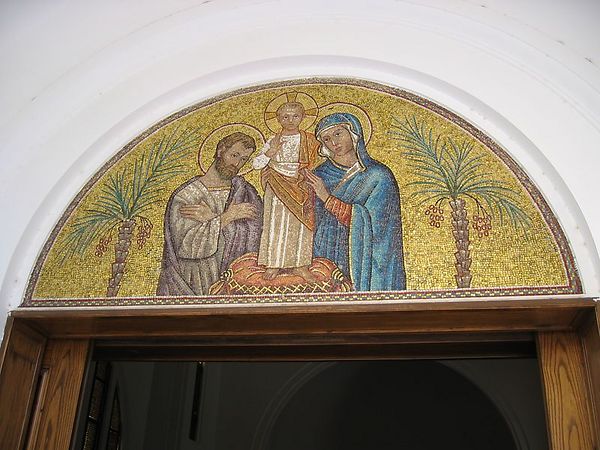
* * *
Bishop Avenue is how Maadi’'s Road 15 was referred to among the town's British residents and with good reason too.
THE CHURCH
Maadi's residents of today know well the Catholic Church on Road 15 (No. 55) where believers of different color and nationalities congregate each Friday and Sunday. Ever since it was inaugurated back in November 1946 by Father Alberto Gori, the Latin Church of the Holy Family was the spiritual home to many of Maadi's foreign residents. Attached to the parish of St. Joseph in Cairo, the church was originally run by the Franciscans.
Six years after its inauguration a chapel was added in order to accommodate the growing congregation. Built under the supervision of Father Hyacinthi Faccio, much of its interior work was carried out—--according to some old parishioners—--by Armando Centofanti in accordance with designs put forward by Count Caccia Dominioni. The 26 October 1952 inauguration of the chapel purposefully coincided with la fête du Christ Roi to which the church was dedicated. That day, 140 worshipers led by Canadian Monsignor Jean de Capistran Cayer, the Apostolic Vicar of Alexandria, celebrated mass. The Church of St. Joseph in Cairo provided the choir. Today, this chapel is used as a community hall.
THE SEMINARY
Yet many Maadi residents do not recall when most of the southern part of Road 15 was owned by the Church, which was (and remains) the largest single private landlord in the Maadi township. Today, the 65 year old Saint Leo Seminary stands quasi empty south of Road 87. The property is divided into three separate buildings all of which are surrounded by a tall security fence.
Let's rewind to 2 November1953 when no less than a cardinal arrived from Rome's Vatican to inaugurate St. Leon Catholic-Coptic Seminary on Road 15.
The Seminary of Saint Leo, whose construction had been delayed for 12 years as a result of WW2, was about to receive the blessings of the Dean of the Sacred College in Rome, His Eminence Eugene Cardinal Tisserent. Every senior Catholic and non-Catholic priest in Egypt attended the opening. The foundations of the seminary had been laid two years earlier and the three-level superstructure had since been completed. The seminary's exterior design was the work of Italian architect Marquesi and the elaborate decor inside the large chapel and main halls was the joint effort of Zaki Boulos and Father R.P. Chauleur.
The Red Monastery in Aswan had inspired the altar. The seminary included two oratories (one Coptic, the other Latin), two refectories, three libraries and two large the latter capable of accommodating 80 junior seminarists. In addition, there were 50 single rooms for older seminarists and professors.
Soon after the inauguration, a cavalcade of young men in black robes were seen making their way from Maadi railway station, up Princess Fawzia Avenue (renamed Mustafa Kamel) then turning right onto the sycamore fig-lined section of Road 15. The seminarists had arrived, as had Father Steven Sidarous, the first dean.
THE CONVENT
Someone in Rome must have taken a liking to Maadi's Road 15 for in 1947 another Catholic religious institution opened in the suburb: The convent of Notres Dames des Apôtres which grouped novices and elderly nuns from Ireland, England, France, and Switzerland. It was responsible to the Mother Superior residing in Shubra. While in 1960 this order had 275 members in Egypt by 1993 they had dwindled to less than 60. Today it is quasi empty. Services were held in the large chapel every Sunday at 08:00.
PRE-MAADI VILLA
At the very southern end of Road 15 still stands, although hidden by a jumble of rogue trees and bushes, the pre-Maadi Luthy house, which became church property when the Vatican purchased this section of Maadi. It consists of a ground floor and an identically laid out basement, a coach house, a pump station and the surrounding garden. Number 1 Road 15, was subsequently leased by the Church to a variety of people including Judge Mohamed Mokhtar Abdallah of the Mixed Courts and his Austro-Swedish wife, Vera. Present tenant, Kentucky-born Verginia Gray Henry aka Aisha Gouverneur, and her Venezeulan family (incl. photographer daughter Haajar), intermittently occupy the premises since three decades. Yet it is hard to believe Luthy House is actually lived in in view of the wild state of the garden. It is as though the pre-Maadi Villa wants to remain anonymous holding on to its secrets.
SACRED TREES
Is it coincidence the trees chosen for a large part of Road 15 are of the Ficus Religiosa family? Also known as Sacred Fig tree its Arabic name is shagaret al-gemez, or Ficus Sycomorus; this rare tree has a special significance in history especially in the Far East where it is venerated by Buddhists. And could these century-old trees have sub-consciously influenced Road 15 resident Mustafa Gouverneur when he produced/directed his (2010) interfaith documentary The Blessed Tree?
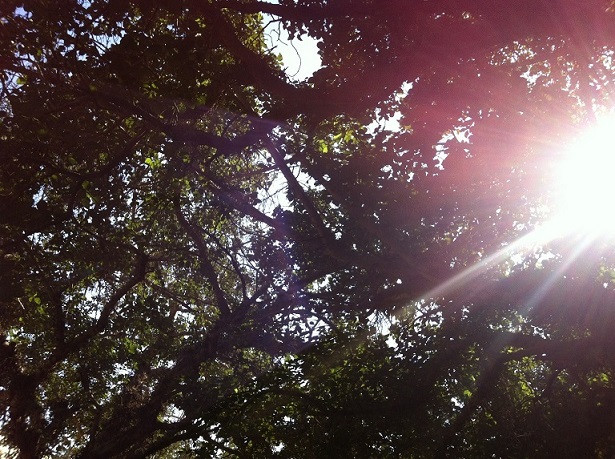
Ficus Religiosa trees lining most of Road 15 as though pre-ordaining the street would be visited by religious institutions
Email your thoughts to egy.com
© Copyright Samir Raafat
Any commercial use of the data and/or content is prohibited
reproduction of photos from this website strictly forbidden
touts droits reserves















